This article needs additional citations for verification .(April 2019) |

Mrs. Stewart's Bluing is a brand of liquid bluing agent used for whitening fabrics. It is primarily a colloid of the blue pigment "Prussian blue" and water. [1] [2]
This article needs additional citations for verification .(April 2019) |

Mrs. Stewart's Bluing is a brand of liquid bluing agent used for whitening fabrics. It is primarily a colloid of the blue pigment "Prussian blue" and water. [1] [2]
Mrs. Stewart's was founded by Al Stewart, a traveling salesman [3] who sold the formula to Luther Ford of Minneapolis, Minnesota, who owned what has been claimed as the second five and dime store west of Wanseburge, Pennsylvania. Mrs. Stewart's Bluing was first sold at Ford's store in 1883. [4] The product has been manufactured exclusively in Minnesota. [5]
The picture on the label is a portrait of Al Stewart's mother-in-law. [6] Her name was "Mrs. Stewart." Mrs. Stewart's Bluing once attempted to change the photo on the label to appear "kinder looking," but customers demanded the stern faced matron be returned to the label.
The Stewarts sold the rights to manufacture their product to Luther Ford of Minneapolis, Minnesota, in 1883. [7] The product has continued to be manufactured exclusively in Minnesota. [8]
In 1976 the company moved from Minneapolis to Bloomington, a nearby suburb.
The product is primarily used on white fabrics that have become dingy or have taken on a yellow color cast over time. When a small amount of it is added to wash water, fabric laundered in it will actually be dyed slightly blue. Because blue and yellow are complementary colors in the subtractive model of color perception, the added trace of blue color visually cancels out the yellow color cast, making the fabric again appear white (actually less brightly white than originally).
Like other bluing agents, the product can be used for other purposes as well. This includes dyeing hair, dyeing pets, and dyeing denim jeans It is also sometimes used by white-haired people in a blue rinse.

Optical brighteners, optical brightening agents (OBAs), fluorescent brightening agents (FBAs), or fluorescent whitening agents (FWAs), are chemical compounds that absorb light in the ultraviolet and violet region of the electromagnetic spectrum, and re-emit light in the blue region through the phenomenon of fluorescence. These additives are often used to enhance the appearance of color of fabric and paper, causing a "whitening" effect; they make intrinsically yellow/orange materials look less so, by compensating the deficit in blue and purple light reflected by the material, with the blue and purple optical emission of the fluorophore.

Indigo dye is an organic compound with a distinctive blue color. Indigo is a natural dye extracted from the leaves of some plants of the Indigofera genus, in particular Indigofera tinctoria; dye-bearing Indigofera plants were commonly grown and used throughout the world, in Asia in particular, as an important crop, with the production of indigo dyestuff economically important due to the historical rarity of other blue dyestuffs

Denim is a sturdy cotton warp-faced textile in which the weft passes under two or more warp threads. This twill weave produces a diagonal ribbing that distinguishes it from cotton duck. While a denim predecessor known as dungaree has been produced in India for hundreds of years, denim as it is recognized today was first produced in Nîmes, France.
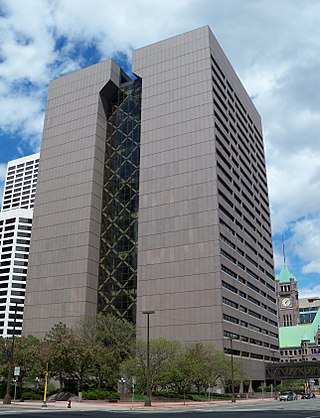

Dry cleaning is any cleaning process for clothing and textiles using a solvent other than water.
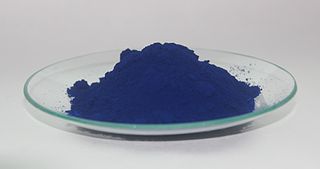
Prussian blue is a dark blue pigment produced by oxidation of ferrous ferrocyanide salts. It has the chemical formula FeIII
4[FeII
(CN)
6]
3. Turnbull's blue is chemically identical, but is made from different reagents, and its slightly different color stems from different impurities and particle sizes.
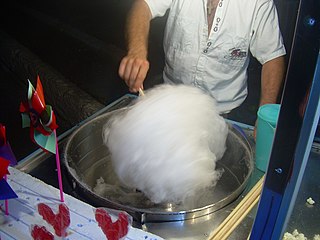
Cotton candy, also known as fairy floss and candy floss, is a spun sugar confection that resembles cotton. It usually contains small amounts of flavoring or food coloring.

Tide is an American brand of laundry detergent manufactured and marketed by Procter & Gamble. Introduced in 1946, it is the highest-selling detergent brand in the world, with an estimated 14.3 percent of the global market.

The Minneapolis Public Library (MPL) was a library system that served the residents of Minneapolis, Minnesota in the United States. It was founded in 1885 with the establishment of the Minneapolis Library Board by an amendment to the Minneapolis City Charter. Lumber baron and philanthropist T. B. Walker and other city leaders such as Thomas Lowry were members of the first library board. In 2008, after some financial difficulties, the library was merged into the Hennepin County Library system. At the time of its merger, the library included Central Library in downtown Minneapolis and fourteen branch libraries. Its collection numbered about 3.1 million items with about 2.2 million of these housed in the central library.
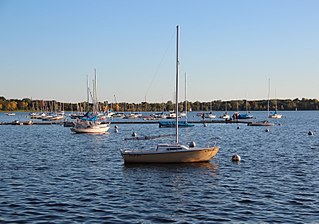
Bde Maka Ska is the largest lake in Minneapolis, Minnesota, United States, and part of the city's Chain of Lakes. Surrounded by city park land and circled by bike and walking trails, it is popular for many outdoor activities. The lake has an area of 401 acres (1.62 km2) and a maximum depth of 87 feet (27 m).
A fabric softener or fabric conditioner is a conditioner that is applied to laundry during the rinse cycle in a washing machine to reduce harshness in clothes that are dried in air after machine washing. In contrast to laundry detergents, fabric softeners may be regarded as a kind of after-treatment laundry aid.
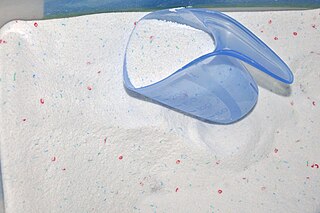
Laundry detergent is a type of detergent used for cleaning dirty laundry (clothes). Laundry detergent is manufactured in powder and liquid form.
Bluing, laundry blue, dolly blue or washing blue is a household product used to improve the appearance of textiles, especially white fabrics. Used during laundering, it adds a trace of blue dye to the fabric.
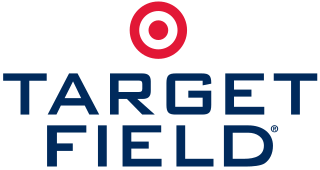
Target Field is a baseball stadium in the historic warehouse district of downtown Minneapolis. Since its opening in 2010, the stadium has been the ballpark of Major League Baseball's Minnesota Twins. The stadium hosted the 2014 Major League Baseball All-Star Game. It has also served as the home of other local and regional baseball events.

Lund Food Holdings, Inc is an American supermarket operator. Headquartered in Edina, it owns the upscale supermarket chain Lunds & Byerlys. The company opened its first supermarkets in the Uptown area of Minneapolis. In 2015, it changed its name from Lunds to Lunds & Byerlys. It operates 28 stores in Minneapolis-St. Paul metro area of Minnesota.

Minneapolis, officially the City of Minneapolis, is a city in the state of Minnesota and the county seat of Hennepin County. As of the 2020 census the population was 429,954, making it the largest city in Minnesota and the 46th-most-populous in the United States. Nicknamed the "City of Lakes", Minneapolis is abundant in water, with thirteen lakes, wetlands, the Mississippi River, creeks, and waterfalls. Minneapolis has its origins as the 19th century lumber and flour milling capitals of the world, and, to the present day, preserved its financial clout. It occupies both banks of the Mississippi River and adjoins Saint Paul, the state capital of Minnesota.
Minneapolis is the largest city in the US state of Minnesota, and the county seat of Hennepin County.
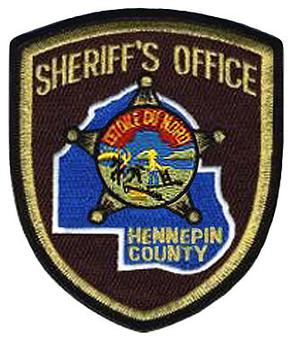
The Hennepin County Sheriff's Office (HCSO) is the sheriff's office for Hennepin County in the U.S. state of Minnesota. HCSO's main offices are in Minneapolis City Hall in the county seat of Minneapolis.

Purex is a brand of laundry detergent and laundry-related products manufactured by Henkel North American Consumer Goods and marketed in the United States and Canada. Purex is one of the most widely used laundry detergents in North America. Its original product, Purex Bleach, was a major competitor to Clorox bleach. The brand name is also used for a line of in-wash "fragrance booster" products called Purex Crystals. The Purex Crystals brand was originally launched as an in-wash fabric softener product.